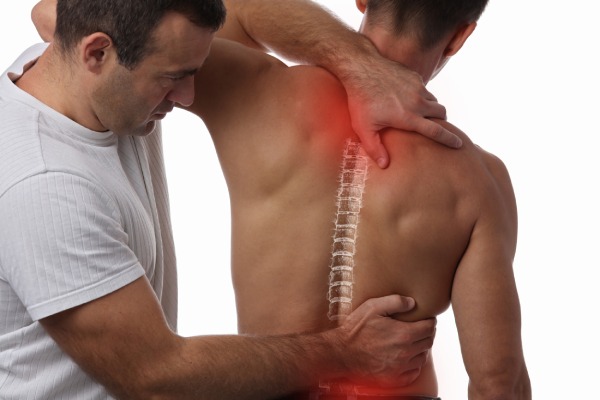Disabling pain in the neck or back can have a ripple effect on one’s mental health, quality of life, and ability to move around. Surgical intervention may be required when non-invasive therapies, such as medication, physical therapy, and behavioral modifications, do not yield the desired results. Herniated discs, spinal stenosis, and degenerative disc disease are some of the problems that can be treated through neck and spine surgery, which is often carried out by expert orthopedic or neurosurgeons. For those thinking about having surgery on their neck or spine, this page explains the many options, when they are necessary, and how the recovery goes.
Getting to Know Spine and Neck Issues
Moving, supporting, and protecting the spinal cord are all functions of the spine, a complicated structure that includes vertebrae, discs, nerves, and muscles. Chronic pain, limited movement, and nerve-related problems can result from damage to any portion of this system. The following are examples of common surgically treated conditions affecting the neck and spine:
- Herniated Disc:This condition flares up when the inner, softer part of a spinal disc pushes through the outer, harder part, causing pain to adjacent nerves.
- Spinal Stenosis:When the spinal canal becomes too narrow, it can put pressure on nerves and lead to discomfort or even paralysis.
- Degenerative Disc Disease:The gradual degeneration of spinal discs caused by aging, resulting in ongoing discomfort and limited movement.
- Spondylolisthesis: One kind of spinal instability that can cause nerve compression is spondylolisthesis, in which one vertebra slips forward over another.
- Cervical Radiculopathy:Pain, weakness, or numbness that travels down one’s arms as a result of nerve irritation in the neck is known as Cervical Radiculopathy.
Although conservative therapies are usually sufficient for many disorders, surgery may be required if symptoms continue or become worse.
When Is It Required to Have Surgery on the Neck or Spine?
After non-surgical treatments have failed to alleviate symptoms or neurological abnormalities like numbness or weakness have begun to develop, surgery is usually reserved for patients with very severe cases. Surgical indications include:
- If you’ve tried physical therapy and medication:your chronic neck, back, or leg pain for months and it hasn’t gone away, surgery may be your next option.
- Signs and symptoms associated with the nervous system:Signs of nerve compression, including numbness, weak muscles, or tingling in the limbs, may lead to the recommendation of surgery.
- Being unable to control one’s bowels or bladder:When the spinal cord is squeezed, it can cause a loss of bladder or bowel function—a uncommon but serious illness known as cauda equina syndrome.
Numerous Approaches to Spine and Neck Surgery
Depending on the nature and extent of the problem, a range of surgical procedures may be considered. Operations affecting the spine and neck are performed most frequently:
- ACDFor Anterior Cervical Discectomy
Herniated discs and degenerative disc degeneration of the neck can be treated with an anterior cervical discectomy (ACDF) operation. After stabilizing the spine by removing the injured disc and fusing the neighboring vertebrae, the surgeon makes a tiny incision in the front of the neck. When a bone graft or artificial implant is utilized to promote fusion, the fused area becomes less mobile, but the discomfort goes away and the stability goes back.
- laminateectomy
When spinal stenosis puts too much strain on the spinal cord or nerves, a laminectomy may be necessary to alleviate the pressure. To make room for more spinal fluid, the surgeon will cut away a section of bone (the lamina) from the spine. Reducing nerve compression, relieving pain, and restoring movement are all possible outcomes of this therapy. It is a typical procedure for the cervical and lumbar spines.
- Fusing the Spine
The goal of spinal fusion surgery is to permanently fuse many vertebrae together, preventing them from moving relative to one another. Surgery for spondylolisthesis, scoliosis, or degenerative disc disease-related persistent discomfort is a common procedure. Pain and additional spinal injury can be mitigated with spinal fusion, which stabilizes the spine. Nevertheless, the afflicted region loses some of its pliability.
- Surgery to Replace Discs
Some individuals may find that artificial disc replacement is a better option than spinal fusion. The surgeon uses an artificial disc to replace the broken one, rather than fusing the vertebrae together, enabling for more natural movement. Disc degeneration in the cervical or lumbar spines can be treated with this surgery while keeping the spine flexible.
- Removal of the disc
To alleviate pressure on a nerve caused by a herniated disc, a microdiscectomy can be performed as a minimally invasive treatment. Surgeons remove the herniated disc by making a small incision and using a microscope to examine the tissue. This less invasive procedure has a shorter recovery period than other options for treating nerve compression-related pain in the legs or arms.
Conclusion
Those whose persistent pain and neurological symptoms have not improved with more conservative methods may find relief through neck and spine surgery. Although considering surgery is no picnic, there are now viable alternatives that can alleviate pain, restore mobility, and improve quality of life thanks to advancements in surgical procedures. To find the best course of treatment for specific needs and circumstances, it is essential to consult a spine specialist.







